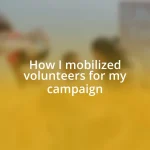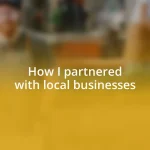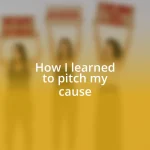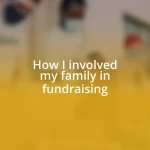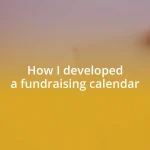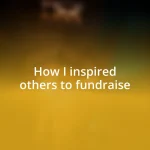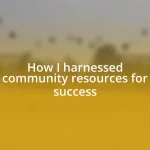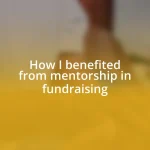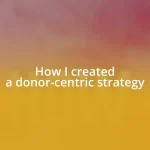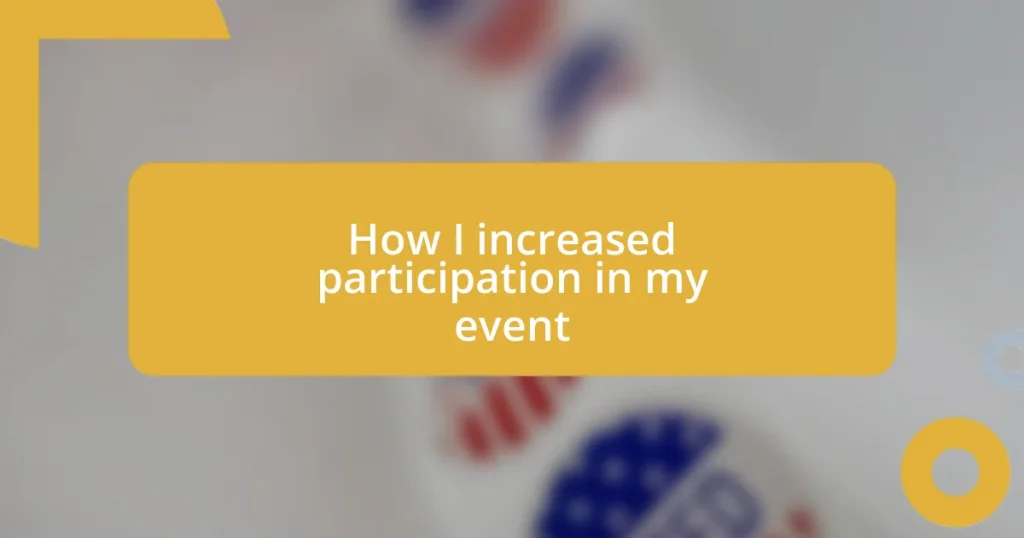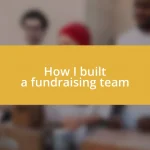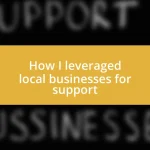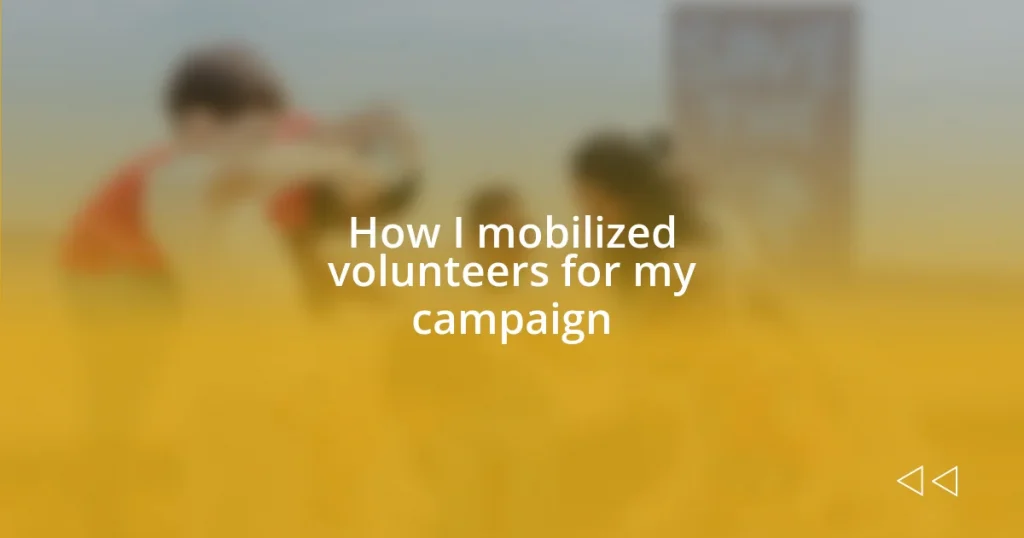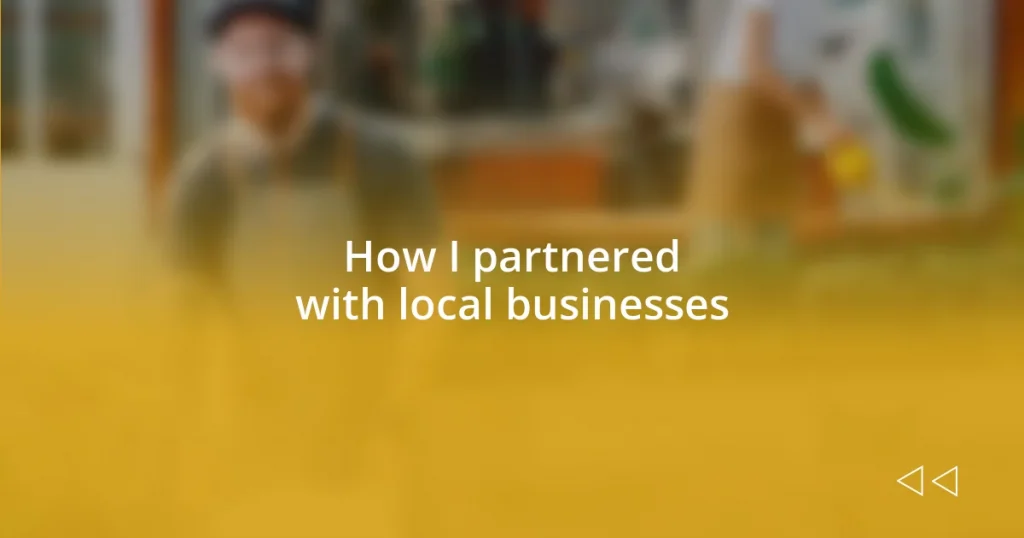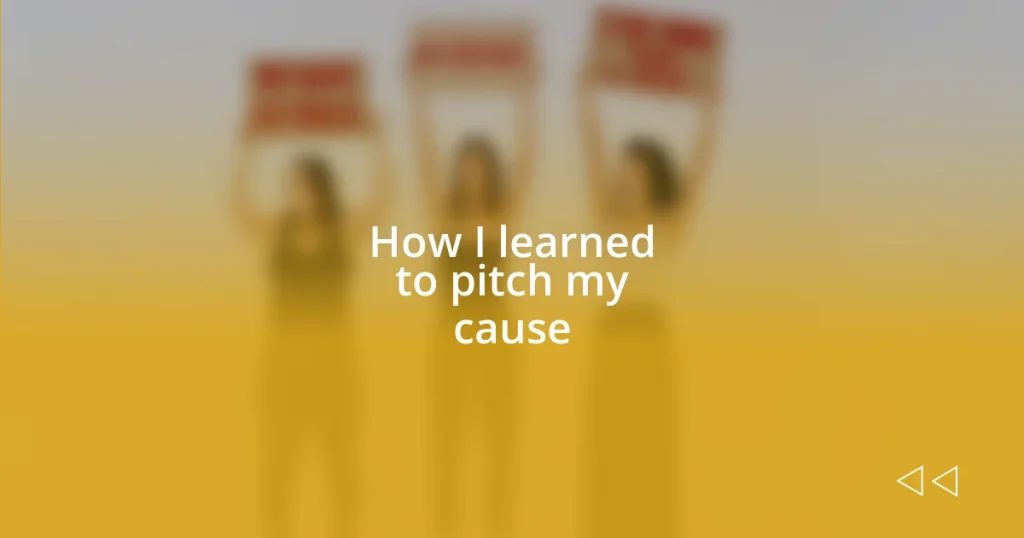Key takeaways:
- Understanding audience motivations and addressing their interests through surveys and personal outreach can significantly enhance event participation.
- Crafting engaging promotional materials and utilizing compelling narratives increases excitement and connection to the event, making it feel more personal.
- Gathering and implementing feedback creates a continuous improvement loop, fostering a sense of community and ensuring events resonate with attendees.
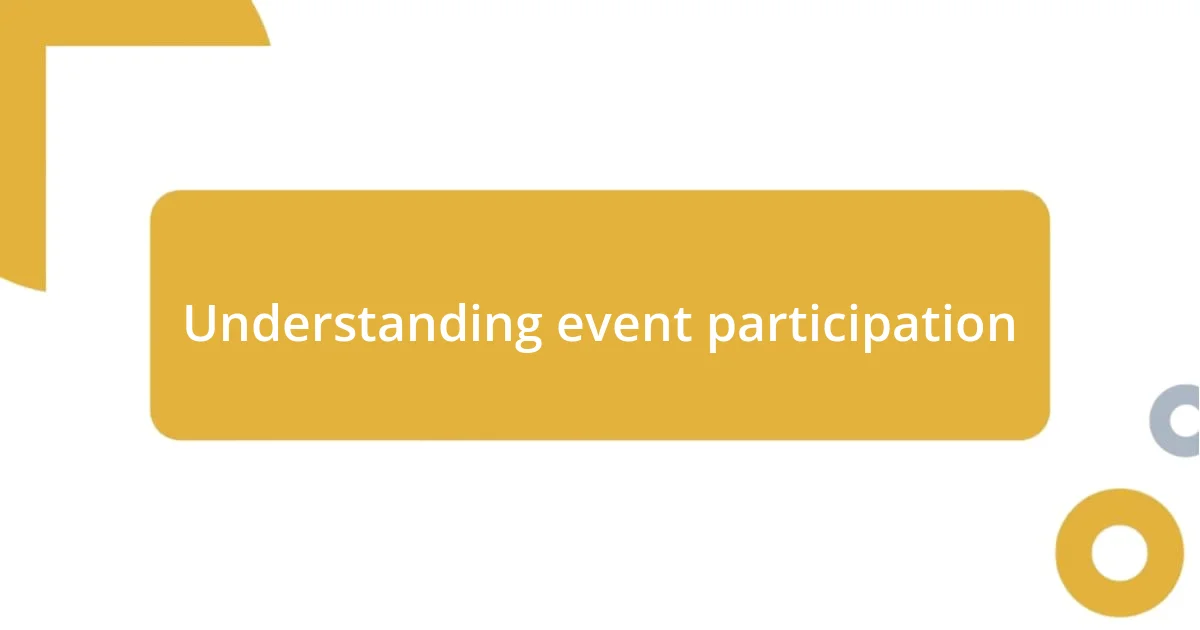
Understanding event participation
Understanding event participation goes beyond just counting heads in a room; it’s about tapping into the motivations and emotions of your audience. I remember the first time I organized a community event. I felt a mix of excitement and doubt: Would people show up? Would they care? That uncertainty pushed me to dig deeper into what would really draw my community in.
People often participate when they feel a connection to the purpose of the event or see personal value in attending. I’ve seen firsthand how a simple, heartfelt invitation can transform the turnout. I once reached out personally to a few local leaders, asking them to share why they cared about the event. Their enthusiasm was contagious and it sparked greater interest from their followers. Isn’t it interesting how a few passionate voices can create a ripple effect?
Moreover, I’ve learned that understanding the audience’s interests and barriers is crucial. Reflecting on my events, I often ask myself: What do they want to gain? By conducting informal surveys and having conversations during past events, I discovered preferences that I had overlooked. People appreciate feeling heard, don’t you think? It’s these insights that contribute to a more tailored and inviting experience for everyone involved.
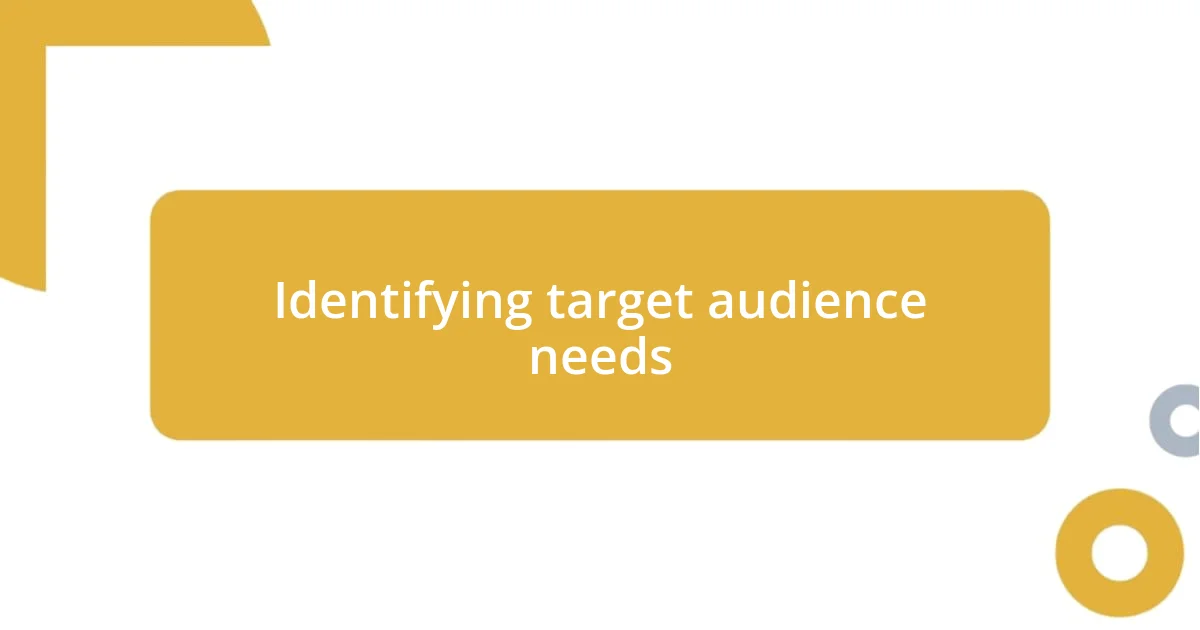
Identifying target audience needs
Understanding the needs of your target audience is really about establishing a genuine connection. I recall a particularly enlightening conversation with a few attendees at one of my events. They shared their reasons for coming—not just for the content, but for the community it fostered. That moment reinforced for me how critical it is to listen closely to the voices around you.
To effectively identify audience needs, consider these strategies:
– Conduct surveys: Simple questionnaires can reveal what attendees truly value.
– Host focus groups: Bringing together a small, diverse group to discuss their interests can yield deep insights.
– Engage in one-on-one conversations: Getting personal feedback can illuminate specific desires or concerns.
– Utilize social media: Platforms where your audience interacts may provide valuable clues about their preferences.
– Observe behavior: Take note of what draws interest during your events; this can lead to revelations about audience expectations.
By embracing these methods, I’ve experienced a transformation in how events resonate with attendees—an enriched understanding that builds robust participation.
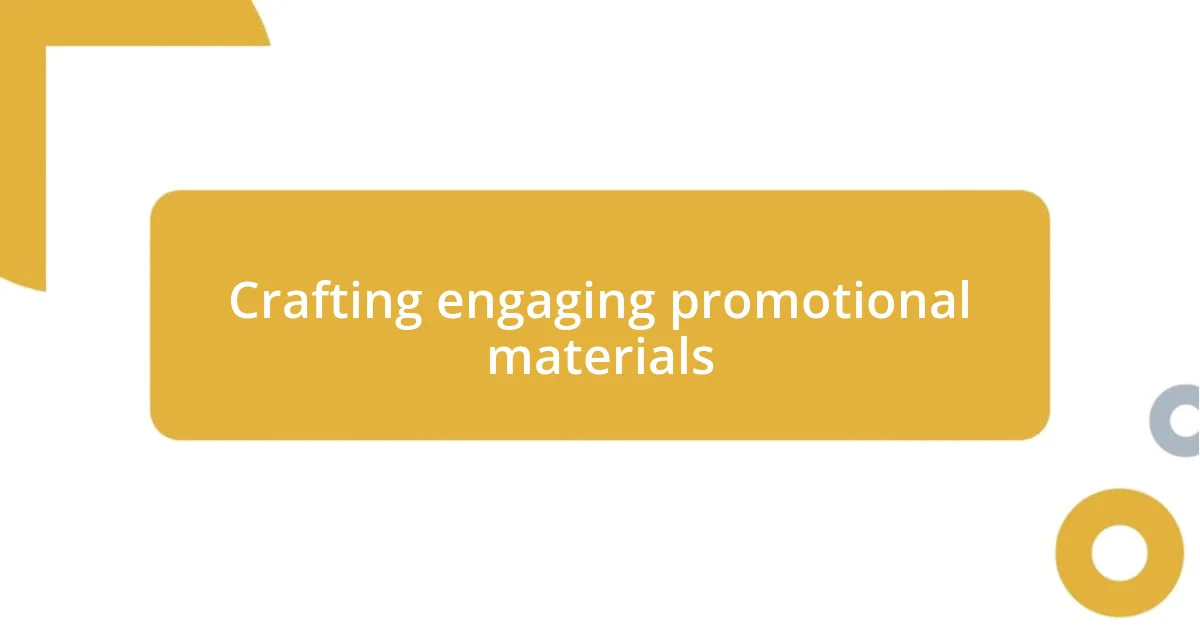
Crafting engaging promotional materials
Crafting compelling promotional materials is essential for increasing participation in any event. I remember when I designed a flyer for my last community workshop. Initially, I went for a standard layout and text, but it felt flat. After some reflection, I decided to incorporate vibrant images and a friendly font, making sure to highlight what my attendees would leave with. This simple change made a world of difference—people not only read it, but they also felt excited about joining in.
When I created social media posts for the event, I stories from past attendees, sharing how they benefited. This narrative approach helped draw in new participants, connecting their emotions to the event’s purpose. I often ponder: How can we make our promotional materials feel more personal? By putting real faces and stories behind the information, I’ve noticed a significant uptick in engagement and shares on social platforms.
One crucial aspect I’ve learned is the need to maintain clarity and brevity in messaging. Overloading potential attendees with too much information can be overwhelming. I usually aim for clear calls to action, enticing visuals, and a consistent theme that resonates with my audience’s interests. In my experience, effective promotional materials are not just informative; they spark curiosity and inspire action.
| Promotional Material Type | Key Feature |
|---|---|
| Flyers | Vibrant visuals and clear value proposition |
| Social Media Posts | Engaging stories and strong calls to action |
| Emails | Personalized content and direct invitations |
| Videos | Dynamic storytelling and event highlights |
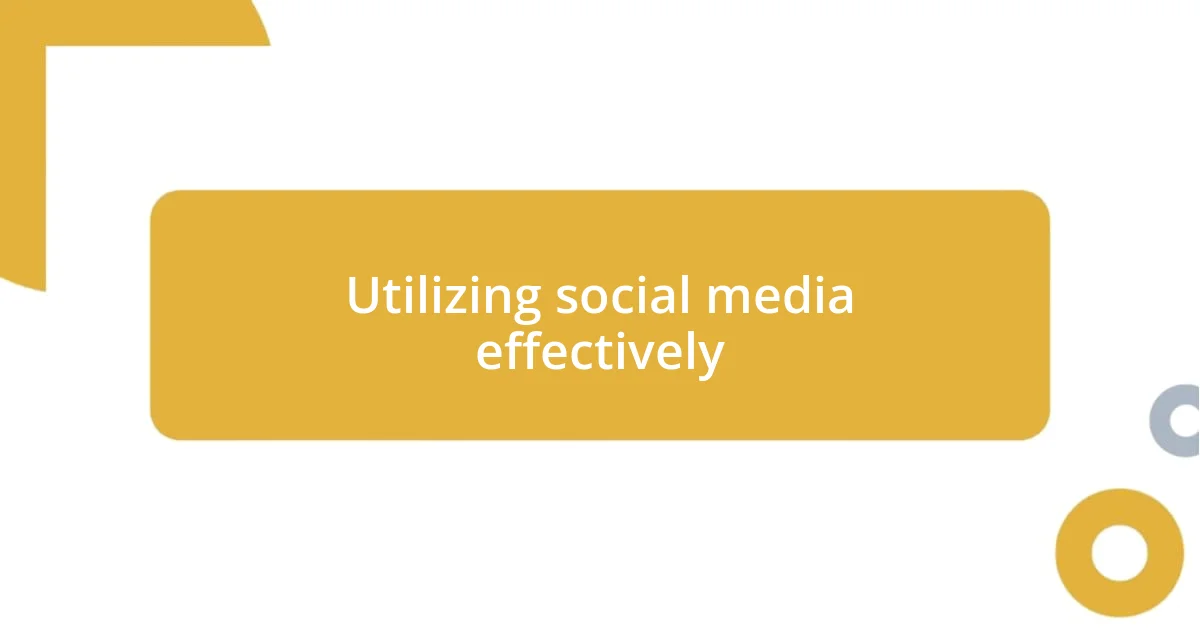
Utilizing social media effectively
Utilizing social media effectively can often be a game-changer for increasing event participation. I vividly remember posting an interactive countdown to my last event on Instagram. The anticipation it built not only engaged my followers but also prompted discussions, with many expressing their excitement in the comments. This participatory approach turned my posts into a community conversation, rather than mere announcements. Have you ever felt the buzz of collective anticipation? It’s that exhilarating energy I strive to create online.
Another strategy that truly resonated with me was hosting live Q&A sessions on platforms like Facebook and Instagram. I recall the thrill of connecting with my audience in real-time, addressing their questions about the upcoming event. Those sessions not only clarified details but also gave attendees a sense of ownership over their participation. I could almost feel their eagerness grow as we chatted; it made the event feel less like an obligation and more like an anticipated gathering among friends. Isn’t it amazing how just a few moments of genuine interaction can make a world of difference?
I’ve also leveraged user-generated content by encouraging attendees to share their experiences on social media prior to the event. One participant shared a heartwarming post about their first time attending one of my events, complete with photos of smiles and laughter. This authentic content worked wonders—others began to catch on, sharing similar posts about their plans or past experiences. It made me wonder: how powerful is it when your audience becomes your best advocates? From my experience, creating an environment where your audience feels empowered to share not only amplifies your message but also fosters a sense of community that drives participation.
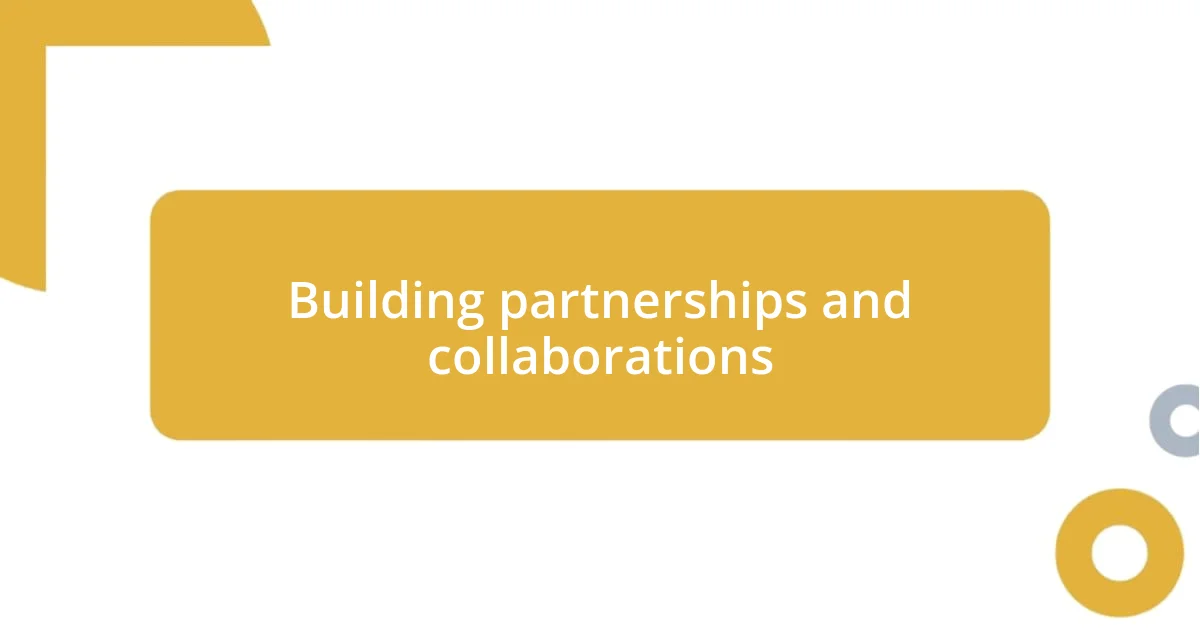
Building partnerships and collaborations
Establishing partnerships and collaborations has been pivotal in expanding the reach of my events. I remember when I teamed up with a local nonprofit organization for my last workshop. Not only did they bring in a dedicated audience, but their network also helped amplify our promotional efforts. Have you ever thought about how much stronger your event becomes with the right collaborators on board? I noticed that shared resources and expertise made our event feel more inclusive and community-driven.
Engaging with local businesses can be another rewarding avenue. For one event, I approached a nearby café to provide refreshments in exchange for promotion. They not only shared our flyers but also posted about the event on their own social media channels. This win-win situation created a buzz, drawing in not only their loyal customers but also new faces to my event. It made me wonder: how often do we overlook these potential partnerships that could enrich our events tremendously?
I’ve found that nurturing relationships with these partners is just as crucial as the initial collaboration. Following the event, I took the time to send personalized thank-you notes to everyone involved, sharing highlights and feedback. This simple act of gratitude often leads to future collaborations. Isn’t it fascinating how a few genuine words can pave the way for deeper connections? These experiences have taught me that building relationships is an ongoing journey, one that continually enhances participation and excitement around my events.
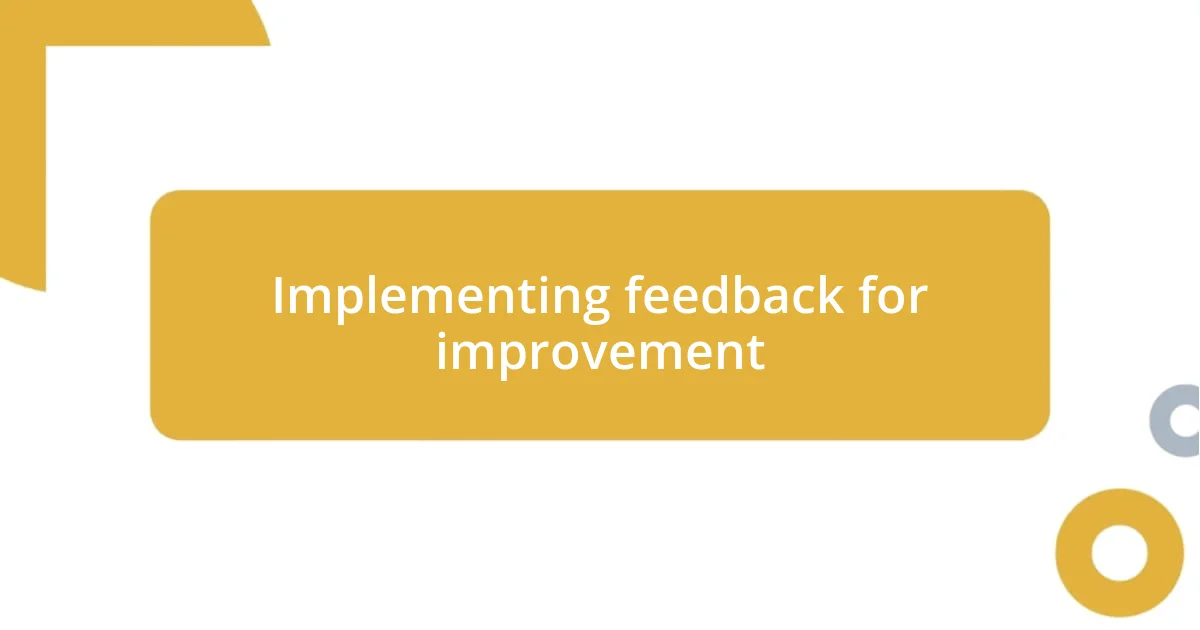
Implementing feedback for improvement
Feedback is a powerful tool for improvement, and I’ve seen its impact firsthand. After each event, I make it a point to solicit opinions from attendees. A while ago, I organized a workshop and asked participants to fill out a quick survey. Their candid responses opened my eyes to aspects I had never considered, like the timing of activities and the balance of speakers. Have you ever realized how much your audience can teach you? I certainly did.
One particular insight stuck with me: someone suggested introducing more interactive elements. Taking that to heart, I incorporated group discussions into the following events. The change was palpable! The energy in the room shifted significantly, and participants felt more included. It made me reflect on how minor adjustments, based on feedback, can create a ripple effect of enthusiasm. When have you seen feedback transform an experience before your eyes?
Moreover, I’ve learned the importance of following up on the feedback I receive. After implementing suggestions, I reach out to attendees to share the changes made and ask for their thoughts. This loop of communication not only validates their input but also fosters a sense of community. I remember one attendee responded with excitement, saying they felt truly valued. Doesn’t it feel rewarding when people see that their voices matter? Embracing feedback not only enhances my events but also strengthens my relationship with the participants.
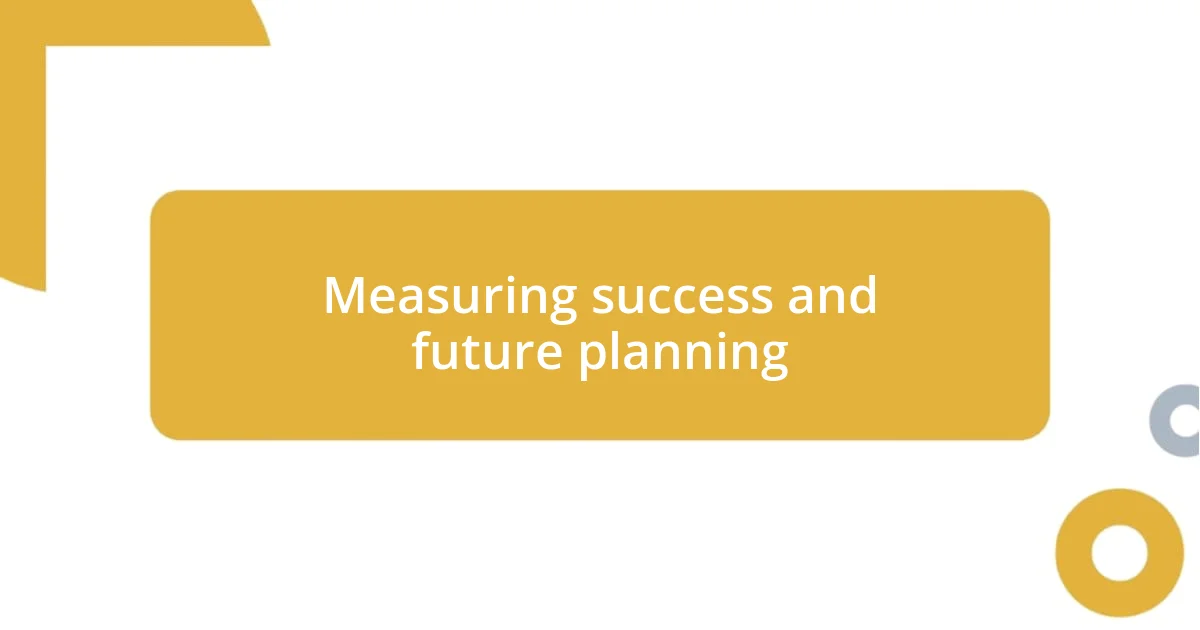
Measuring success and future planning
Measuring success isn’t just about numbers; it’s about the stories behind those numbers. After each event, I take a deep dive into attendance figures, participant engagement, and even social media interactions. For instance, during my last event, I noticed a spike in follow-up discussions online, which told me that people were genuinely interested in what we’d created together. Isn’t it fascinating how metrics can reveal the heart of an event?
I also believe in the value of setting clear, measurable goals before each event. This approach gives me a benchmark to evaluate success. For example, I aimed for a 20% increase in attendance compared to the previous year. When I surpassed that goal by 30%, I felt a rush of accomplishment—proof that the strategies I was implementing truly made a difference. How often do you set benchmarks that keep you motivated?
Looking ahead, I’m excited to use the insights gathered from my measurements for future planning. I want to create events that not only attract more people but also resonate deeply with them. For example, I plan to focus more on digital engagement, as I’ve realized how effective online promotions were in reaching wider audiences. As I draw from both the successes and the areas for improvement, I can’t help but feel energized about what’s next. What emerging trends do you think could shape our future events?
